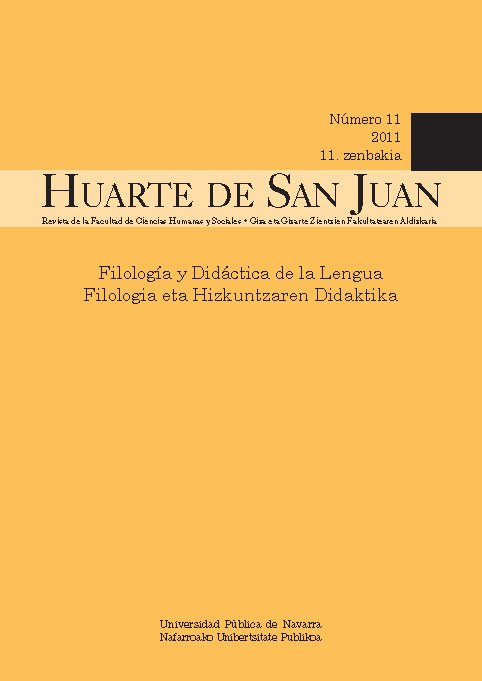Capacitación lingüística de ingreso en la UPNA Un estudio comparativo de varias titulaciones de grado
Abstract
The process of accreditation of levels of competence in foreign languages is such a heterogeneous process that a reflection has been recommended in the university context to define not only levels but also the way to achieve them. This study aims to be part of that reflection by analyzing the entry-level competence of students from five new degrees at the UPNA. The students took a computer level test. The grades in the entry-level test were used to explore both the adequacy of the required exit level of the different degrees and the differences depending on the exit level requirements of the degree, on gender and on the knowledge of other languages. The students’ level was also compared to their results in other level or entry assessments. Results indicated level A2 is the most common; that neither required exit level, nor gender, nor knowledge of other languages influenced the level obtained in the test; and that coincidences between test level and other tests level was high for levels A1, A2 and B1, but very low for higher levels, B2 and C1.
Downloads
References
Corpas, M. D. y Madrid, D. (2009): “Desarrollo de la comprensión oral en inglés como LE al término de la Educación Secundaria Obligatoria española”, en Porta Linguarum 11, 129-145.
Instituto Cervantes (2002): Marco Común Europeo de las Lenguas: Aprendizaje, Enseñanza y Evaluación, Madrid, MECD-ANAYA.
Viña Rouco, M. (2005): “El perfil competencial del profesorado de LE en la educación primaria”, en Glosas Didácticas 14, 95-101.
Halbach, A., Lázaro Lafuente, A y Pérez Guerra, J. (2010): La acreditación del nivel de lengua inglesa en las universidades españolas, British Council. Disponible en http://www.britishcouncil.org/spain_informe_acreditacion_ingles_universidades_espanolas_.pdf
Downloads
Published
How to Cite
Issue
Section
License
All articles are published under a Creative Commons (BY-NC-ND 4.0) license. Each article will be assigned a DOI.
Authors retain copyright of their work and grant the journal the right to the first publication. Authors can sign additional agreements to non-exclusive distribution of the published version of the article (for example, in an institutional repository) as long as appropriate attribution to the original publication is provided. Articles can be uploaded to institutional repositories immediately after publication.
Electronic distribution of the articles (for example, academic social networks or personal webpages) is allowed and encouraged.
The journal reserves the right to publicise the work in social networks and other electronic means.







